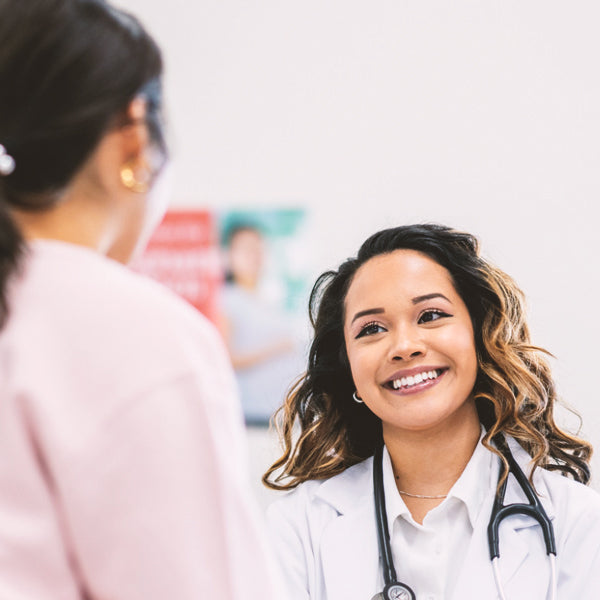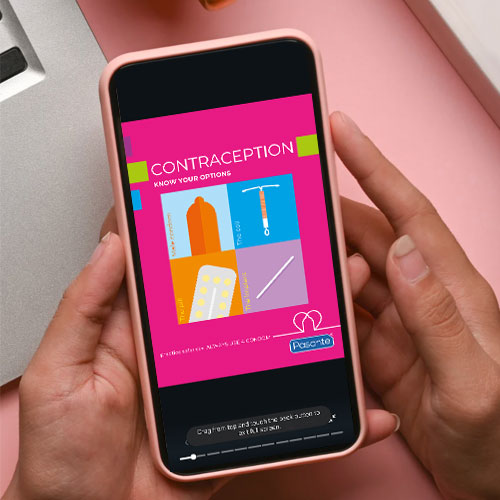
What is Chlamydia?
Share
Chlamydia is a bacterial infection, also known as Chlamydia Trachomatis that is passed on from partner-to-partner through unprotected sex, sharing sex toys, or coming into contact with infected semen or vaginal fluids. Chlamydia lives either in the uterus, the cervix, the urethra (the tube where urine comes out), the rectum and occasionally in the eyes and throat. You don’t have to have a lot of sexual partners to get chlamydia - you can still catch it even if it’s your first time.
Chlamydia remains the most common sexually transmitted infection with data from Public Health showing 168,889 new chlamydia cases in 2024. Despite this high number, levels of Chlamydia have declined, compared to 2023 figures.
With the launch of the National Chlamydia Programme aimed at reducing Chlamydia among the 15-24 age bracket, there were 53,166 new chlamydia diagnoses - an 18% decrease from 2023.
This is why it’s important to continue wearing condoms during sexual activity as well as ensuring you and your partner have regular testing - so we can continue to see a reduction in new chlamydia cases.

What are the symptoms?
On average, 80% of women and 60% of men show no symptoms of chlamydia, therefore you may not know you have it. If you do have symptoms, they tend to appear between 1-3 weeks after coming into contact with chlamydia. If left untreated, chlamydia can lead to long-term health conditions, such as pelvic inflammatory disease, inflammation of the testicles as well as infertility.
If you do experience the following chlamydia symptoms, book yourself in at your local sexual health clinic as soon as possible.
Chlamydia symptoms in men:
- Pain when passing urine
- Discharge from the tip of the penis
- Pain and swelling of the testicles
Chlamydia symptoms in women:
- Pain when passing urine
- Unusual discharge
- Spotting or bleeding after sex or between periods
- Abdominal pain

What is the Chlamydia Screening Programme?
The National Chlamydia Screening Programme was established in 2003 to ensure that all sexually active people under the age of 25 were informed about chlamydia and had access to free testing within the UK. With easy and accessible testing, the NCSP aims to control the infection through early detection, therefore reducing the risk of passing the infection to someone else.
You can pick up a free chlamydia screening test through your local Contraception and Sexual Health Clinic, most GP surgeries and pharmacies as well as other community and health settings. Inside the pack, you will find either a swab (for females) which you can do yourself (don’t worry, there are instructions and it's really simple) or a urine sample (for males). You complete the test, fill out a form with your details, pop it back in the envelope and either post it in the pre-paid envelope or take it back to your nearest clinic - it’s as easy as that.
What if I don’t fall into this age bracket?
If you don’t fall into this age bracket, you can still get tested and treated for free at your local sexual health clinic.
How is it treated?
If you have a positive chlamydia result, then try not to worry. Chlamydia is easily treated with antibiotics, either as a single dose (one tablet) or as a course of antibiotics which could be up to 2 weeks. This treatment is 95% effective and you may be offered another test a few months later to check that the infection has gone. Anyone that you have been sexually active with will also need to be contacted and treated but don’t worry, your local sexual health clinic can do that for you if you would prefer and would never give your name. You and your partner will have to abstain from intercourse for either 7 days or until you have both finished your course of antibiotics.
How can I prevent myself from catching Chlamydia?

Condoms! Condoms reduce the risk of catching sexually transmitted infections by preventing any sexual fluids from being transferred. By using a condom (or dam) every time you have vaginal, anal or oral sex reduces the risk of contracting chlamydia. We have a wide variety of condoms available from regular, king, super king and trim as well as flavoured and fun condoms so there’s plenty of variety available. We also have latex free for those that have a latex allergy, internal condoms as well as dams.
Unsure which condom to choose? Read our blog on What type of condom should I buy
As well as ensuring you or your partner wear condoms, getting a sexual health screen on a regular basis (we recommend annually or on change of a sexual partner) will help reduce the risk of catching and passing the infection on.
To find out more about chlamydia, visit the Chlamydia Screening Programme or visit the Family Planning Association website.
Download this blog as a PDF for teaching and learning purposes.



